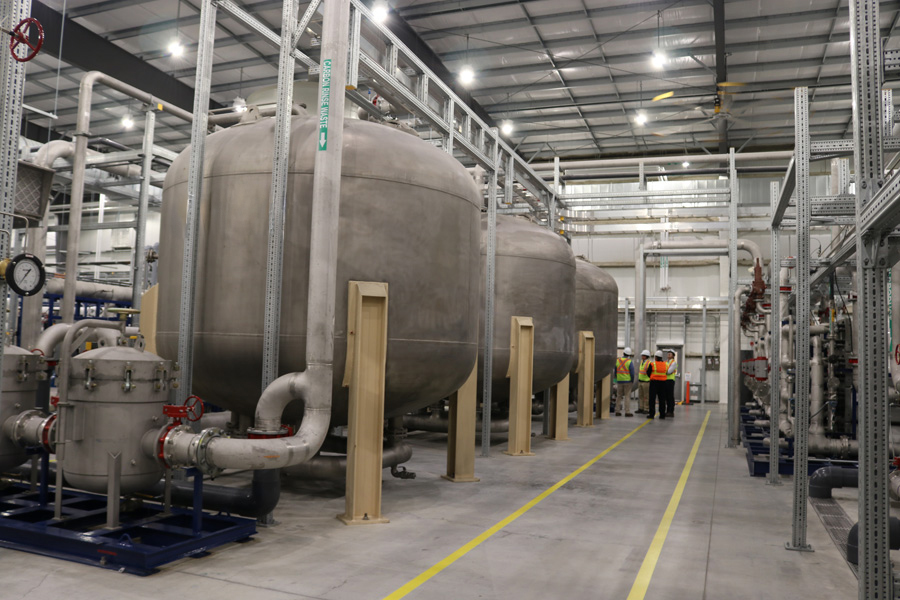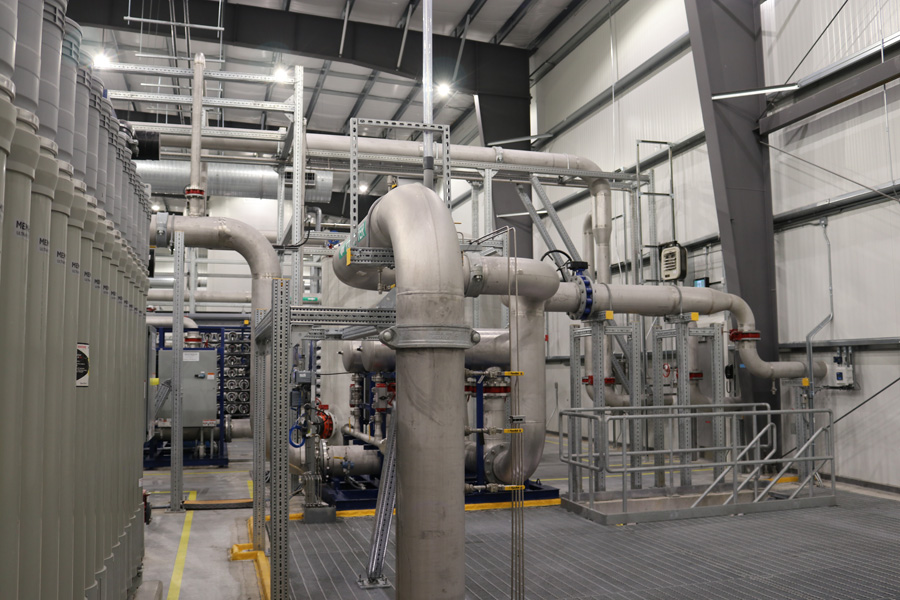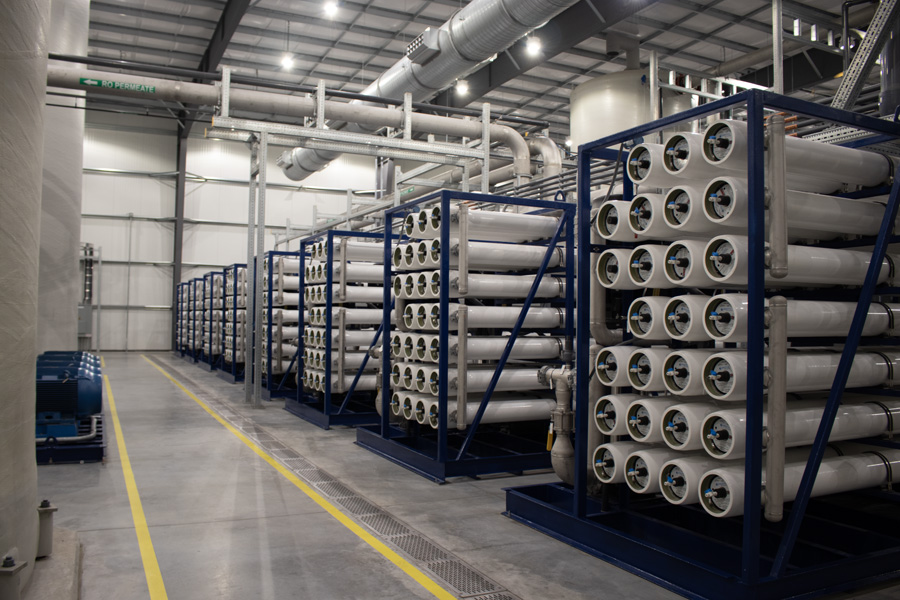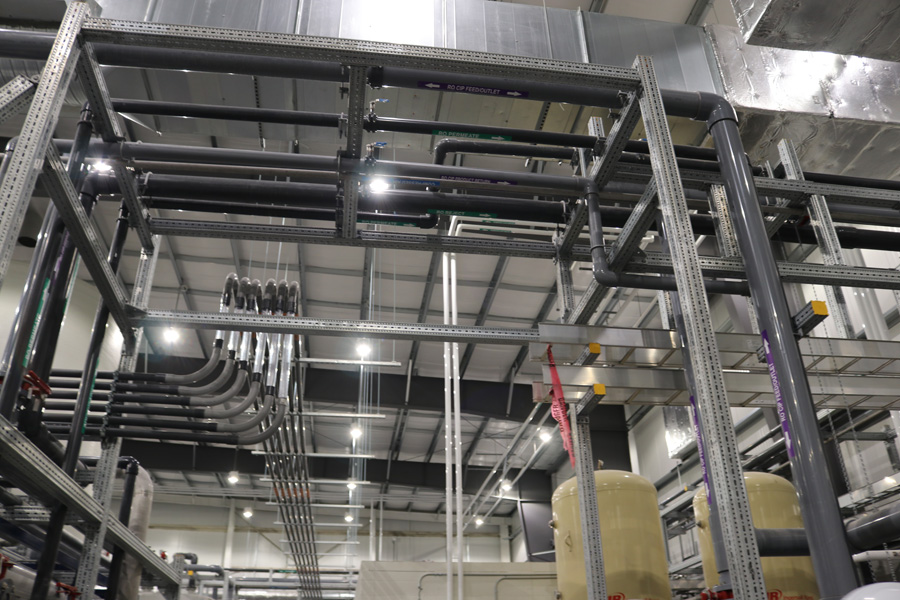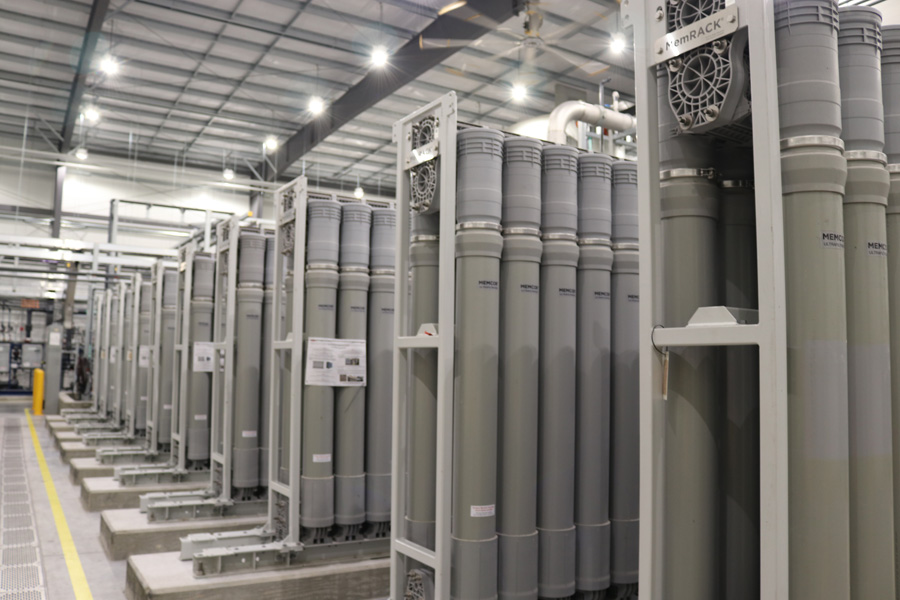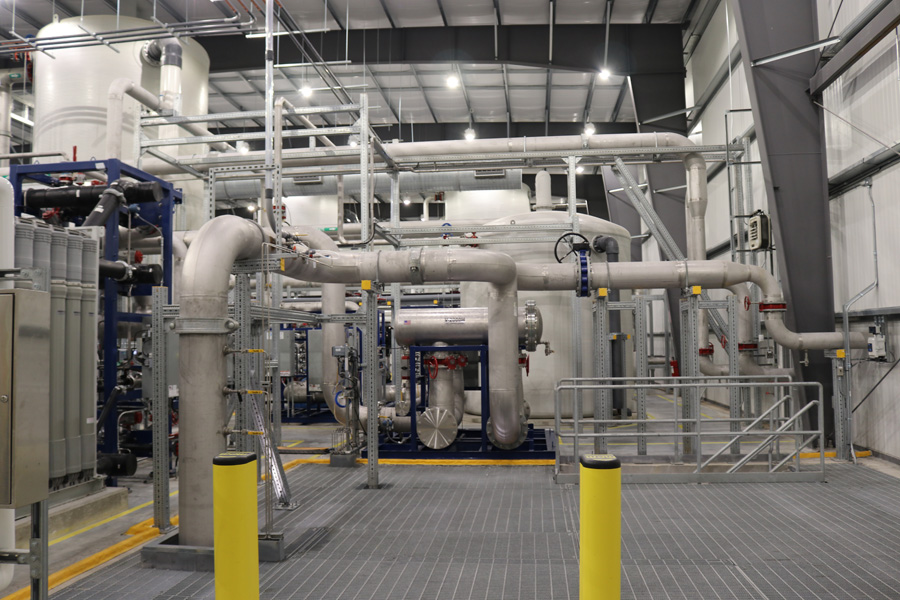Bird, in partnership with EPCOR and Ontario Power Generation (OPG), successfully delivered the new Darlington Water Treatment Plant—a critical infrastructure project ensuring a reliable supply of pharmaceutical-quality demineralized water to OPG’s nuclear steam systems for the next 30 years. This 2,800 sq. m. facility, located at the secure Darlington Nuclear Generating Station, was strategically designed and built outside the protected area, allowing operations to continue uninterrupted at the existing plant.
Client:
Ontario Power Generation (OPG)
Consultant:
Stantec Consulting Ltd.
Contract Type:
Construction Management
Project Size:
2,800 m2 (30,139 ft.2)
Duration:
30 Months
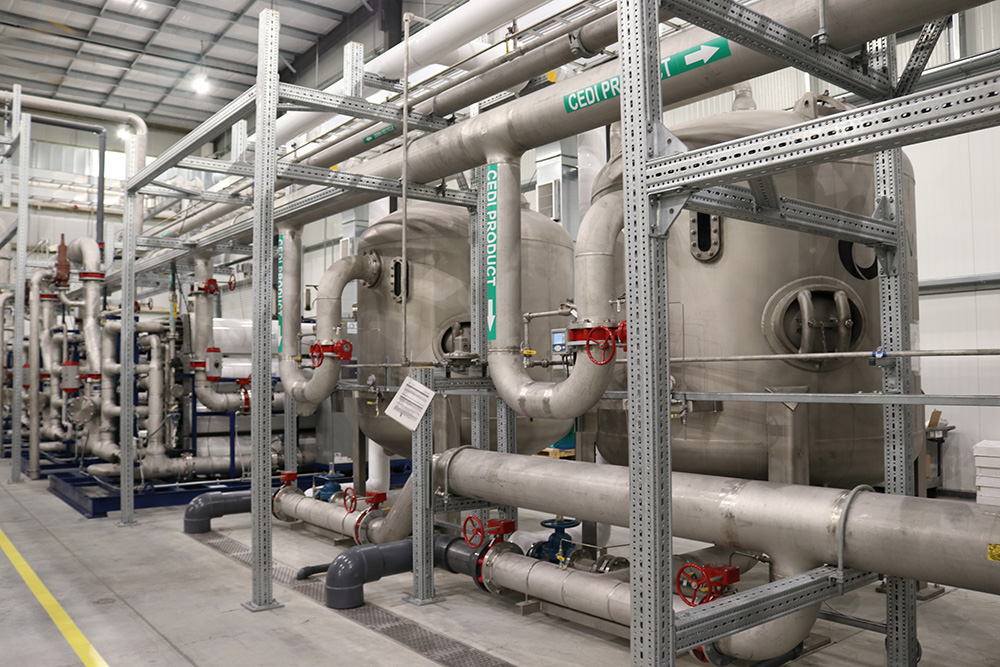
The new facility was essential as OPG’s original water treatment plant neared the end of its service life. With advanced water purification technology, the facility converts Lake Ontario’s raw water into the highest-purity pharmaceutical-grade demineralized water. Bird’s scope included comprehensive site preparation, civil works, underground piping, structural construction, and installation of treatment systems, along with mechanical, electrical, and SCADA instrumentation to ensure redundancy, capacity, and reliability.
The new facility was essential as OPG’s original water treatment plant neared the end of its service life. With advanced water purification technology, the facility converts Lake Ontario’s raw water into the highest-purity pharmaceutical-grade demineralized water. Bird’s scope included comprehensive site preparation, civil works, underground piping, structural construction, and installation of treatment systems, along with mechanical, electrical, and SCADA instrumentation to ensure redundancy, capacity, and reliability.
To expedite the facility’s commissioning while minimizing impacts on OPG’s ongoing operations. Bird utilized Virtual Design and Construction (VDC) and LEAN Construction methods to foster collaboration across all project teams, resulting in a refined design, minimized risks, reduced design changes, and optimized costs and scheduling, seamlessly integrating the new facility with existing systems.
Key features of Bird’s collaborative approach included:
- A shared digital platform enabling comprehensive review of design intents, project sequencing, and activity planning.
- Real-time digital progress tracking, allowing immediate updates and seamless adjustments.
- Connected, role-based project reporting via dashboards, ensuring all team members stayed informed.
- Integration of data across all project phases, reducing duplication and allowing contributions to a single, unified dataset.
- Prefabrication and modularization techniques that improved cost certainty and profitability.
